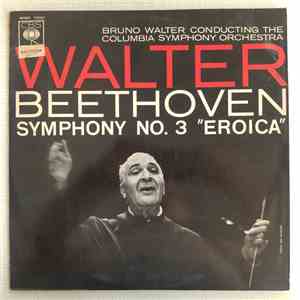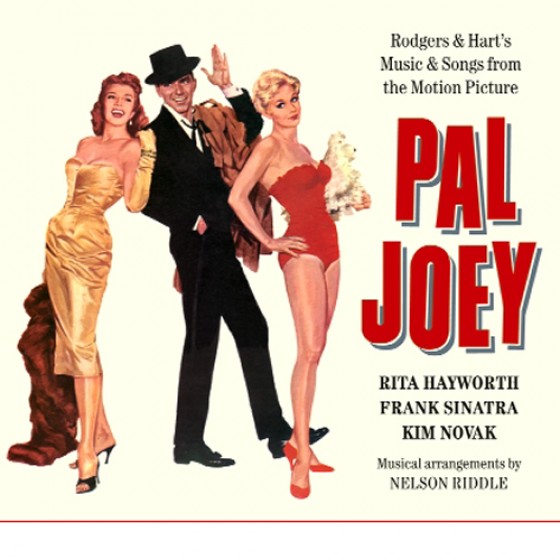Not long ago, a friend tagged me on Facebook to participate in a “10 records in 10 days” exercise in which you describe record albums — one per day — that influenced, presumably in a good way, your life. My friend Patty should have known better than to think I’d play by the rules.
The challenge made me think, and the answers didn’t come easily or quickly. What follows, though, is my list, offered in one unwieldy piece.
- The How the West Was Won soundtrack album (1962) — I couldn’t possibly have any recall of the movie from its first run, since it came out when I was an infant, but it is one of the first movies I remember seeing, and the album was in our home as far back as I can remember.


Right out of the gate, the music over the main titles set the tone for the grandeur and epic scale of what lay ahead.
It was this record that introduced me to the power of great movie music. “The snare drums,” little Clay thought. “They evoke a steam locomotive!”
Because I read liner notes I knew that Alfred Newman was the How the West Was Won composer, and because I read movie credits I also drew connections from movie to movie through Alfred Newman scores. From Gunga Din and Beau Geste to Airport, I came to recognize a certain Alfred Newman sound. I can’t explain what it is, only that it is.
Alfred Newman, with 43 Oscar nominations, was the third most nominated person in Academy Award history. In addition to writing music, he was a noted orchestrator and music director. It was he, for example, who put “Red River Valley” so effectively into John Ford’s The Grapes of Wrath. He also wrote the famous fanfare at the beginning of 20th Century Fox films, a few seconds of music that’s still played today. Knowing what I learned decades ago about Alfred Newman helped me to appreciate much later that his son Thomas wrote the scores for American Beauty, Road to Perdition, Finding Nemo and Skyfall; his son David scored The War of the Roses, Hoffa and Galaxy Quest; his brother Lionel wrote the theme to Daniel Boone and won a Best Score Oscar for Hello, Dolly!; and his nephew Randy wrote and sang about short people and his love for L.A. There was another brother, Emil, who composed the scores for The Magnificent Dope, The Groom Wore Spurs, Hong Kong Confidential and Riot in Juvenile Prison. Perhaps the less said about Emil, the better. And that is where the How the West Was Won soundtrack album took me.
Another soundtrack album that registered early was that from John Wayne’s The Alamo (1960).
Again from the album cover, I learned that Dimitri Tiomkin, a Russian-born composer, wrote the music. And as with Alfred Newman, I came to be able to recognize Dimitri Tiomkin music even before I saw his name in movie credits. There were The Guns of Navarone, High Noon and Mr. Smith Goes to Washington. Surely Dimitri Tiomkin’s most whistleable work is the theme song from The High and the Mighty.
It would have been reasonable to include most of these soundtrack albums as individual entries in my Top 10 list, but it was How the West Was Won that started it all and all roads led from there, so it is the only movie soundtrack to appear on my list. - “Walt Disney’s Happiest Songs” (1967) — Hardly a classic album, and improbably released only at Gulf service stations, this record brought together memorable songs from memorable Disney movies, all of which registered significantly in the consciousness of a child of the 60s.


 It is because of this record that I know the words to “Bibbidi Bobbidi Boo,” “Bare Necessities,” “When You Wish Upon a Star” and “Bella Notte.” That last song served years later as a mnemonic device when I learned Italian. “Notte” is a feminine noun, after all, because it was bella and not bello. I also know from the record that Winnie the Pooh was a tubby little cubby all stuffed with fluff.
It is because of this record that I know the words to “Bibbidi Bobbidi Boo,” “Bare Necessities,” “When You Wish Upon a Star” and “Bella Notte.” That last song served years later as a mnemonic device when I learned Italian. “Notte” is a feminine noun, after all, because it was bella and not bello. I also know from the record that Winnie the Pooh was a tubby little cubby all stuffed with fluff.
The album gave me some historical perspective when, on Sunday afternoons, I’d see “American Sportsman” goose-hunting segments featuring Bing Crosby and Phil Harris. Harris, who was an actor, singer and comedian, was the voice of Baloo the bear in The Jungle Book, and from him I learned to forget about my worries and my strife.
- “Hi-Fi Fiedler” (1958) — Here was the first record to draw a line for me from pop to classical, of course via the “Overture to William Tell.”
 But I hung on through Track 2 on the B-side and heard Tchaikovsky’s “Marche Slave,” which was a revelation. Even without the slightest awareness of theme, counterpoint and all the other music-y stuff that goes into music, I felt something good and I liked it. The Rimsky-Korsakov dragged, though.
But I hung on through Track 2 on the B-side and heard Tchaikovsky’s “Marche Slave,” which was a revelation. Even without the slightest awareness of theme, counterpoint and all the other music-y stuff that goes into music, I felt something good and I liked it. The Rimsky-Korsakov dragged, though.
The experience with “Hi-Fi Fiedler” induced me to explore the rest of my parents’ classical records. Bruno Walter’s Columbia recording of Beethoven’s Eroica symphony stirred me some, too.

- The Pal Joey soundtrack album (1957) — This recording of “The Lady is a Tramp” is where it all began.


(Ignore this ridiculous slide show. Just listen.)
I was 12 or 13 when I pulled the record from my parents’ shelf and had a look. I hadn’t heard of or seen the movie, so I couldn’t say what motivated me to put the record on the turntable for a listen. I knew of Frank Sinatra but only as a guest star on TV specials and an actor in old movies.
I’ve not spent much time analyzing the source or nature of my Sinatra fanship and won’t do it here. But this record launched a lifelong experience, and Sinatra music has been a constant and essential part of own soundtrack. - I soon began spending a lot of my disposable income on Sinatra albums, the first being the newest, Sinatra – The Main Event and Some Nice Things I’ve Missed, both from 1974.


Only a few times more was I able to buy Sinatra albums as they came out, but in 1974, everything was new. Neither of these records was great, although both albums had very good moments, including two lovely ballads by Alan and Marilyn Bergman and Michel Legrand. Listen to the exquisite diction in “What Are You Doing the Rest of Your Life?”
All of that said, the world could have done quite well without Frank Sinatra’s versions of “Bad, Bad Leroy Brown,” “Tie a Yellow Ribbon ‘Round the Ole Oak Tree” and “Sweet Caroline.” - I continued to gobble up Sinatra records of any and all eras, from the late 30s through early 70s. There seemed to be no end of the up-tempo variety, but I also bought the slow and sad ones, notably In the Wee Small Hours of the Morning, Only the Lonely, Where Are You? and No One Cares.
Beginning around the time of my parents’ separation, when I was 16, I’d put these records on to play, and very quickly my mom would say, “Please don’t play that around me.” When I asked why, she would say only, “I just don’t like it.”
It wasn’t until much later, after I’d been around the block a few times, that I understood where Mama was coming from, and it’s related to what made Sinatra a great singer. As with few other performers, he was able to convey the emotion of a song, and for some of those songs, you really had to be in a good place to listen to them. Listen here to the devastating, painful beauty.
- The Bobby Darin Story (1961) — Somewhere in my high school years I discovered Bobby Darin. I knew him from his early-70s TV shows but otherwise can’t explain what attracted me to this album in the record store.

It would be silly of me to deny that I sensed a Sinatra-ness in Bobby Darin. After all, he performed in a tuxedo. But he was a unique and insanely talented entertainer, and it saddens me even now to think about his death at age 37, only eight months afterThe Bobby Darin Show ended in April 1973.
Here is his last performance. Know when you watch it that during this period Darin had to go into the wings and breathe oxygen during his shows.
And this. Try not to watch this and feel sad at the early loss of a great musical talent.
- The English Beat’s I Just Can’t Stop It (1980) — It might surprise readers who have made it this far to learn that there have been periods where I have bought records by artists at the same time the artists were at the height of their popularity.


During the summer and fall of 1982, which I spent in school in Ann Arbor, I fell for ska. “Mirror in the Bathroom” was a doozy, but the Beat also turned Andy Williams’ “Can’t Get Used to Losing You” and Smokey Robinson’s “Tears of a Clown” into new and exciting things that made sense to me. Innocence was good then. - Ricky Martin, Sound Loaded (2000) — In the context of Rossini, Rodgers & Hart, Sinatra and Darin, it might seem weird that “She Bangs” would figure in my pantheon. But it does.

- Third Eye Blind (1997)

- Fun., Aim & Ignite (2010)

Now I have only one request. Please please please — don’t ask me to discuss “10 movies in 10 days.” I’m not up to it.
